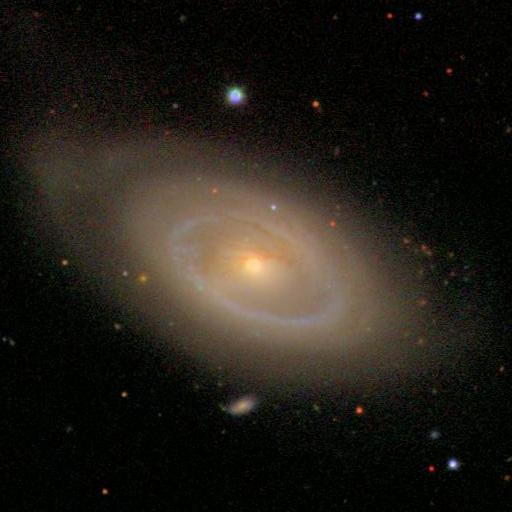A study of active and inactive galaxies by Paul Westoby, Carole Mundell and Ivan Baldry from the Astrophysics Research Institute of Liverpool John Moores University has given new insights into the complex interaction between super-massive black holes at the heart of Active Galactic Nuclei (AGN) and star formation in the surrounding galaxy.
The team studied the properties of light from 360,000 galaxies in the local Universe to understand the relationship between accreting black holes, the birth of stars in galaxy centres and the evolution of the galaxies as a whole.
The study finds that gas ejected during the quasar stage of AGN snuffs out star formation, leaving the host galaxies to evolve passively. The study also reveals a strong link between galaxy mergers and the formation of super-massive black holes in AGN, but shows that if the environment becomes too crowded with galaxies, then the likelihood of firing up a supermassive black hole becomes suppressed.

Scientists believe that all AGN go through a quasar phase, where the radiation emitted from the growing accretion disc around the central black hole becomes so bright that it outshines its entire host galaxy. Today, most massive galaxies are thought to contain a dormant super-massive black hole at their heart, a legacy of this earlier phase of powerful quasar activity, but for reasons unknown, some of these local black holes have been reignited.
The Liverpool team concentrated on these local AGN, which can be studied in more detail than their more distant quasar cousins, and, by comparing the properties of a large number of galaxies, the team addressed a key question – do galaxies that host AGN represent an adolescent or transition phase of galaxy evolution?
“The starlight from the host galaxy can tell us much about how the galaxy has evolved,” said Westoby. “Galaxies can be grouped into two simple colour families: the blue sequence, which are young, hotbeds of star-formation and the red sequence, which are massive, cool and passively evolving.” Westoby continued “Scientists have thought for some time that AGN host galaxies might be a stepping stone between the two families and therefore represent a critical point in the lifetime of a galaxy, but our study has been able to rule this out.”
Instead the AGNs identified by the team lay in galaxies that showed a clear overlap with red sequence galaxies. This suggests that the star-forming days for AGN host galaxies have a distinct cut-off point and that the post-quasar local AGNs are no longer generating new stars.
This conclusion is reinforced by the team’s findings that the majority of local AGNs are linked with “classical bulges”, round balls of stars formed during violent mergers of gas-rich galaxies early on in the Universe’s history, rather than “pseudo bulges”, disc-only galaxies that have not undergone a major merger since their formation. This implies that the formation of the super-massive black hole that drives the AGN is linked to the evolution of the bulge, rather than the galaxy as a whole.
Finally, the team identified an intriguing population of galaxies that have an active population of young stars together with an actively accreting black hole, so-called composite galaxies. These masquerade as a transition population, and lie in the region predicted for galaxies experiencing AGN feedback – the process by which material ejected by the AGN has a direct impact on the evolution of the surrounding galaxy.
However, Westoby and colleagues find feedback an unlikely explanation for the observed properties of these galaxies and suggest that feedback may only be important during the quasar phase and not in weaker, nearby AGN.
Article: “Are Galaxies with AGN a Transition Population”, Westoby, Mundell & Baldry, 2007, Monthly Notices of the Royal Astronomical Society, 382, 1541






Comments